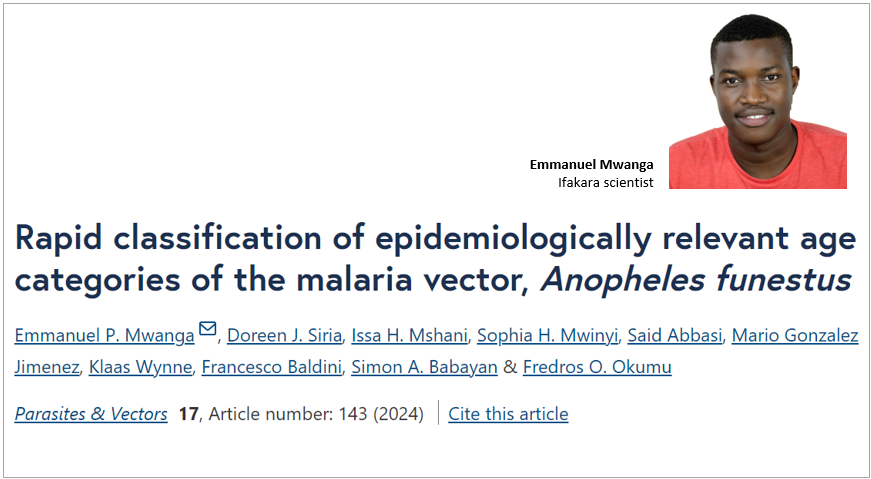
SURVEILLANCE: New method for determining malaria mosquito age groups

In a recent malaria study, scientists have identified a new method for determining the age groups of adult mosquitoes. The technique utilizes infrared spectroscopy and machine learning (MISR-ML) to accurately identify the age of mosquitoes, which is crucial for understanding parasite transmission.
“Accurately determining the age and survival probabilities of adult mosquitoes is crucial for understanding parasite transmission, evaluating the effectiveness of control interventions and assessing disease risk in communities,” explained the scientists in their paper published in the Parasites & Vector journal.
The study, conducted by a team of scientists at Ifakara Health Institute and the University of Glasgow, mainly focused on Anopheles funestus mosquitoes, which are responsible for over 80% of malaria transmission in Tanzania.
Challenges in studying this species
Anopheles funestus efficient transmission coupled with their high survival rates and slow growth rate poses a challenge for researchers striving to understand their demographics and effectively combat malaria.
According to scientists, traditional methods of studying An. funestus demographics, such as ovarian dissections, are tiresome, time-consuming and impractical for large-scale applications. However, the newly developed technique offers a promising solution.
“This study demonstrates the classification of adult female An. funestus into distinct and epidemiologically relevant age categories using a MIRS-ML approach. In conjunction with prior research conducted on other Anopheles mosquitoes, this study suggests that the applicability of this approach can be extended to evaluate various entomological attributes in An. Funestus,”
“The MIRS-ML approach proves to be quick and cost-effective and has the potential to significantly enhance An. funestus surveillance efforts, thereby contributing valuable insights to national malaria control programs, particularly in resource-constrained settings where this vector is highly prevalent.”
Application, efficacy of models
The study, which utilized 2084 spectral data points, employed machine learning models to classify An. funestus mosquitoes into different age groups. By analyzing the mosquitoes' cuticles' biochemical composition, the models accurately distinguished between young (1–9 days old) and older (10–16 days old) An. funestus females.
The approach marks the first successful demonstration of predicting An. funestus mosquito age using infrared spectra and ML models, opening avenues for broader applications in malaria vector surveillance across various regions in Africa. Similar techniques have been applied to predict various indicators in other Anopheles species, including age, blood meals, infection status, and insecticide resistance profiles.
Validating the technique in field settings
While the study marks a significant advancement, scientists emphasize the need for validation in field settings to ensure its effectiveness across diverse populations of wild mosquitoes.
“Further research is needed to validate the MIRS-ML approach in field conditions, using adult An. funestus populations and other vector species within malaria-endemic communities, and to examine how the machine-classified age categories correlate with the epidemiological strata of malaria in human populations.”
Author’s contribution
The study was conducted by scientists from Ifakara Health Institute in collaboration with colleagues from the University of Glasgow, UK.
Among the Ifakara scientists involved were Emmanuel Mwanga (the lead author), Doreen Siria, Issa Mshani, Sophia Mwinyi, Said Abbasi, and Fredros Okumu. Mario Gonzalez Jimenez, Klaas Wynne, Francesco Baldini, and Simon Babayan were from the University of Glasgow.
Read the publication here: https://pubmed.ncbi.nlm.nih.gov/38500231/
